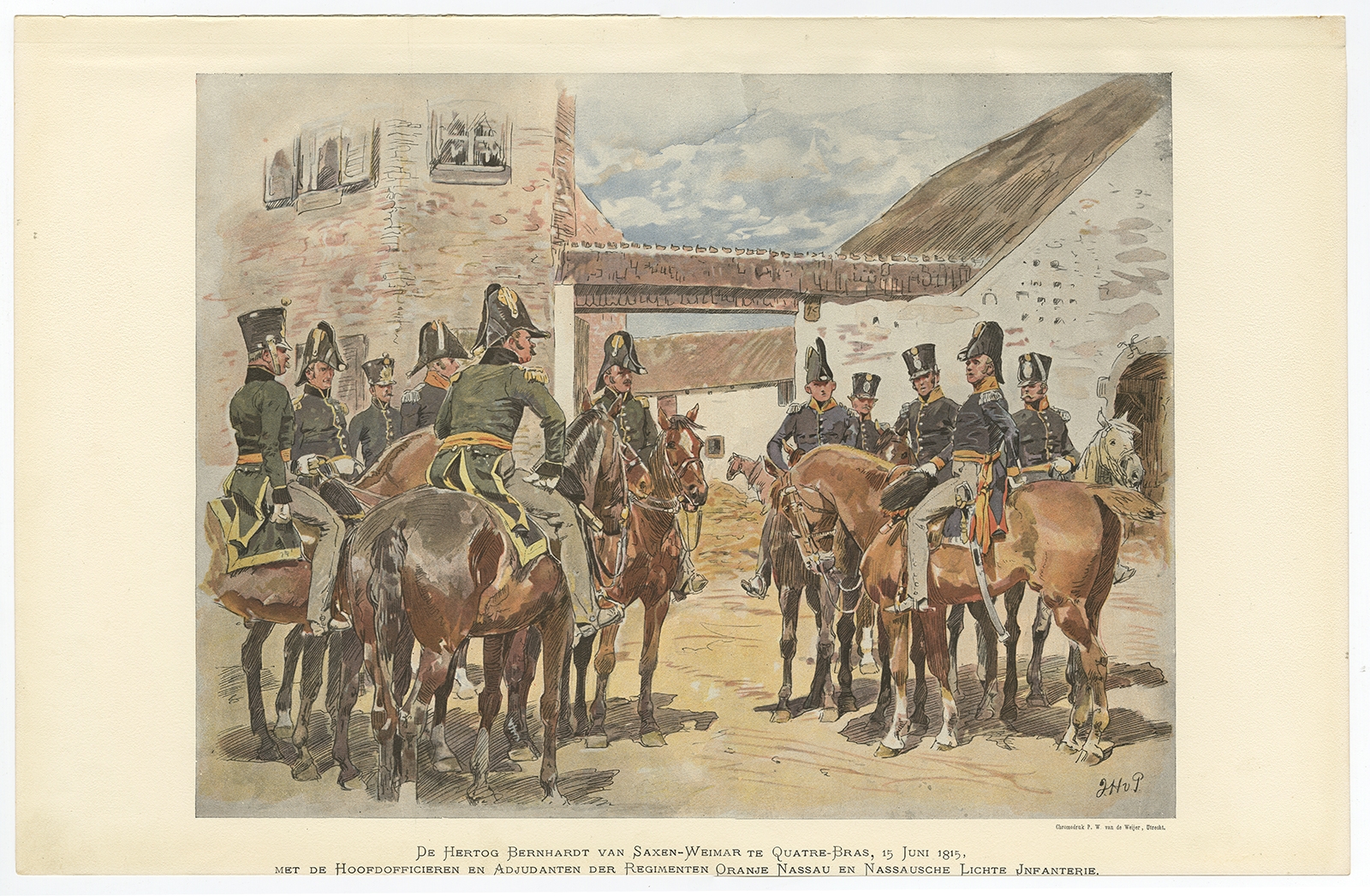Napoleon, Emperor of France, employing his favourite strategy of the central position has invaded Belgium on the 15th June. The Prussian army covering the frontier has retreated towards Sombreffe whilst the Allied army has failed to mobilise.
' Napoleon has humbugged me ' states the Allies premier general, Sir Arthur Wellesley, 1st Duke of Wellington on hearing the invasion news.
Having split the Allied armies successfully, Napoleon appoints Marshal Ney to command his left wing advancing on Frasnes. Ney arrives at approximately 5 PM with his ADC, Colonel Heymes to assume his duties. He finds his new command strung out on the march and attempts to find out where everybody is.
Meanwhile, a short distance from Frasnes, at Quatre Bras, Prince Bernard Von Sachsen-Weimar, commander of the 2nd Nassu brigade decides to ignore the Dukes orders to concentrate at Nivelles and advises his commander of his decision. As a result of this action Baron Perponcher-Sedlnitsky, commanding the 2nd Netherlands Division decides to concentrate at Quatre Bras too. This act of insubordination means that there is at an Allied presence at Quatre Bras as opposed to none at all.
The strategic importance of this junction is that whilst being the main highway to Brussels it also through the old Roman road of Nivelles to Namur, that Wellington's army is still tentatively linked to Blucher's Prussian army.
Possibly due to a lack of staff officers, tiredness ( allegedly hung over) or a desire for specific orders from his Majesty as operations evolve, Ney has made no effort to close up his command or advance on Quatre Bras on the morning of the 16th June.
However, around noon an Imperial messenger arrives with specific orders from his Majesty to march forward and destroy all opposition.
The scene is set.
Timeline Morning 16th June 1815 to 2PM.
French Chasseurs from the 6th Chasseurs a cheval question local refuges about the whereabouts of the Allied Army.

Polish lancers from the Elba squadron, Chevau-Legeres-Lancers de la Garde Imperial reconnoitre the Dutch Belgian position near the Bois de Bossu.
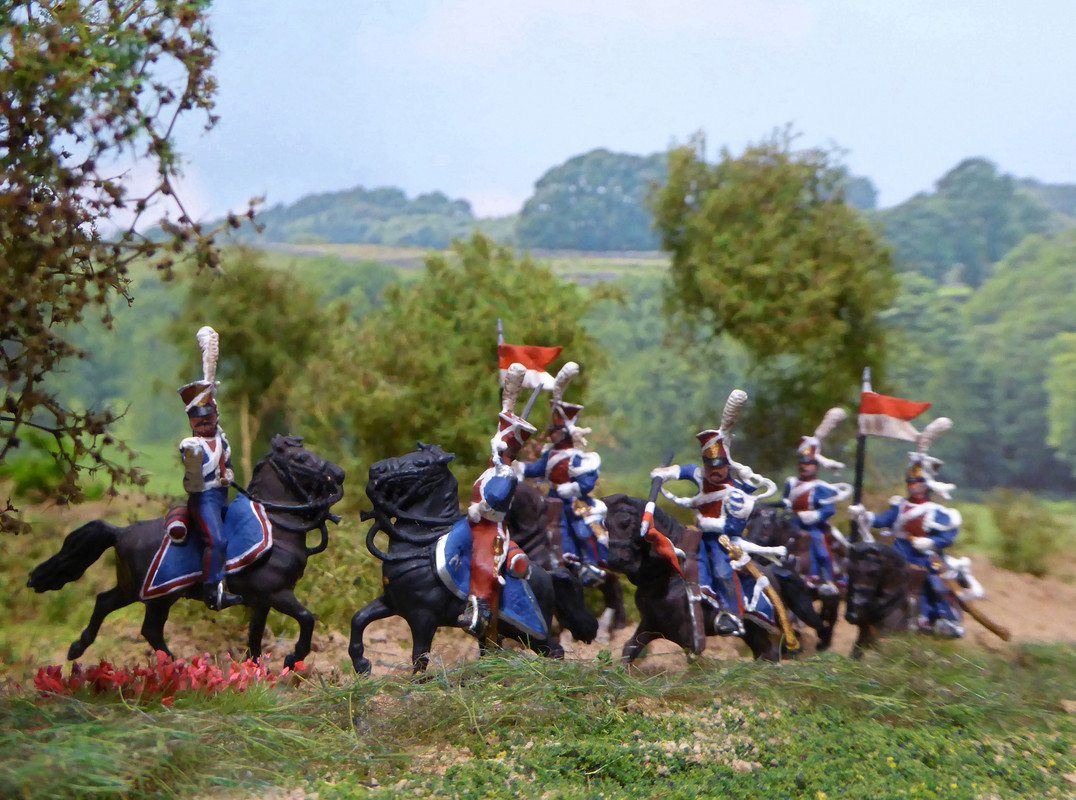
Prince Bernard von Sachsen-Wiemar, commanding 2nd Infantry Birgade discusses the situation with his commanding officer, Baron Perponcher-Sedlnitsky at the Ferme de Quatre Bras.
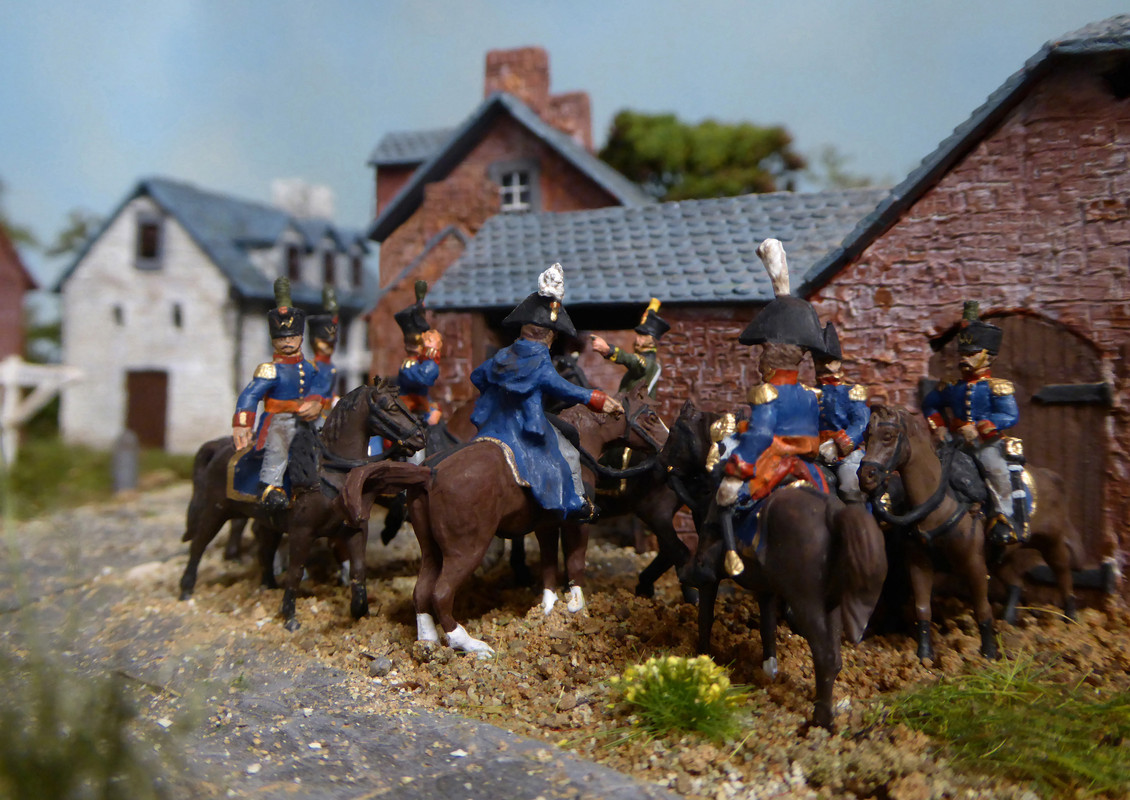
Belgian foot artillery commanded by Captain Emanuel Stevenart position themselves between the Bois de Bossau and Ferme de Gemincourt.
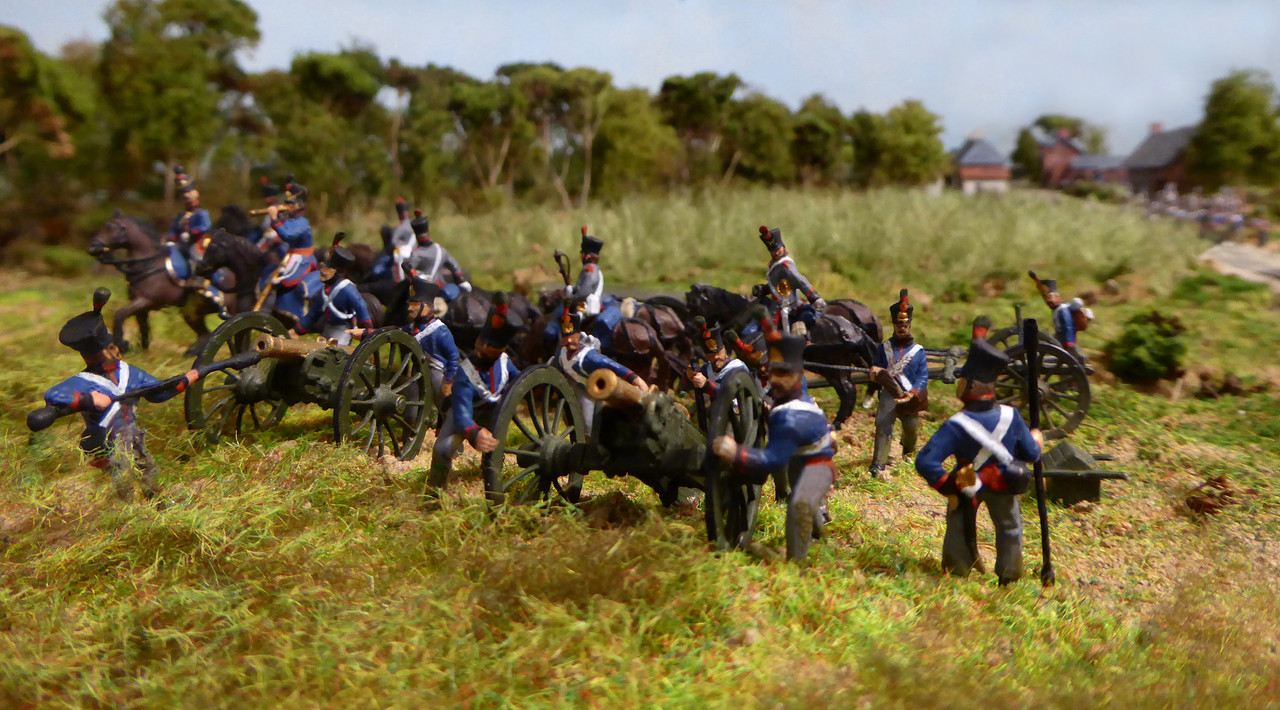
Gemincourt farm is occupied by elements of the 2nd Regiment Oranien-Nassau.

Nassau troops enter the Bois de Bossu to take up position.
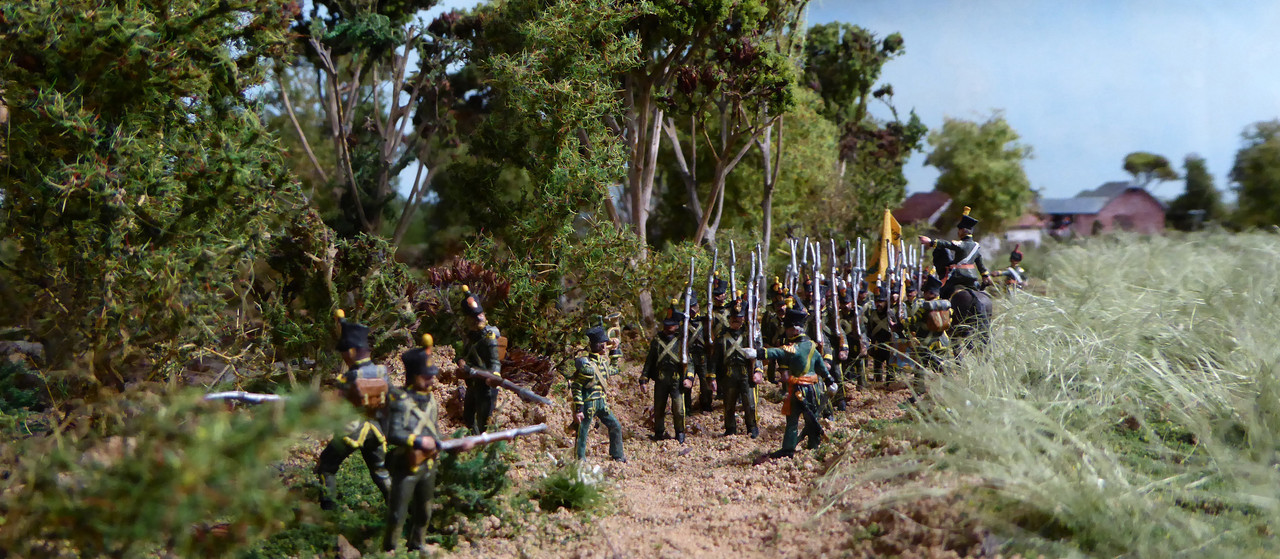
The Duke of Wellington together with William Frederik, Prince van Oranje, commanding 1st Corps examine the French activity from outside Ferme de Gemincourt. The Duke having approved the Prince's dispositions will shortly depart to meet with Feldmarschall Blucher at Brye.
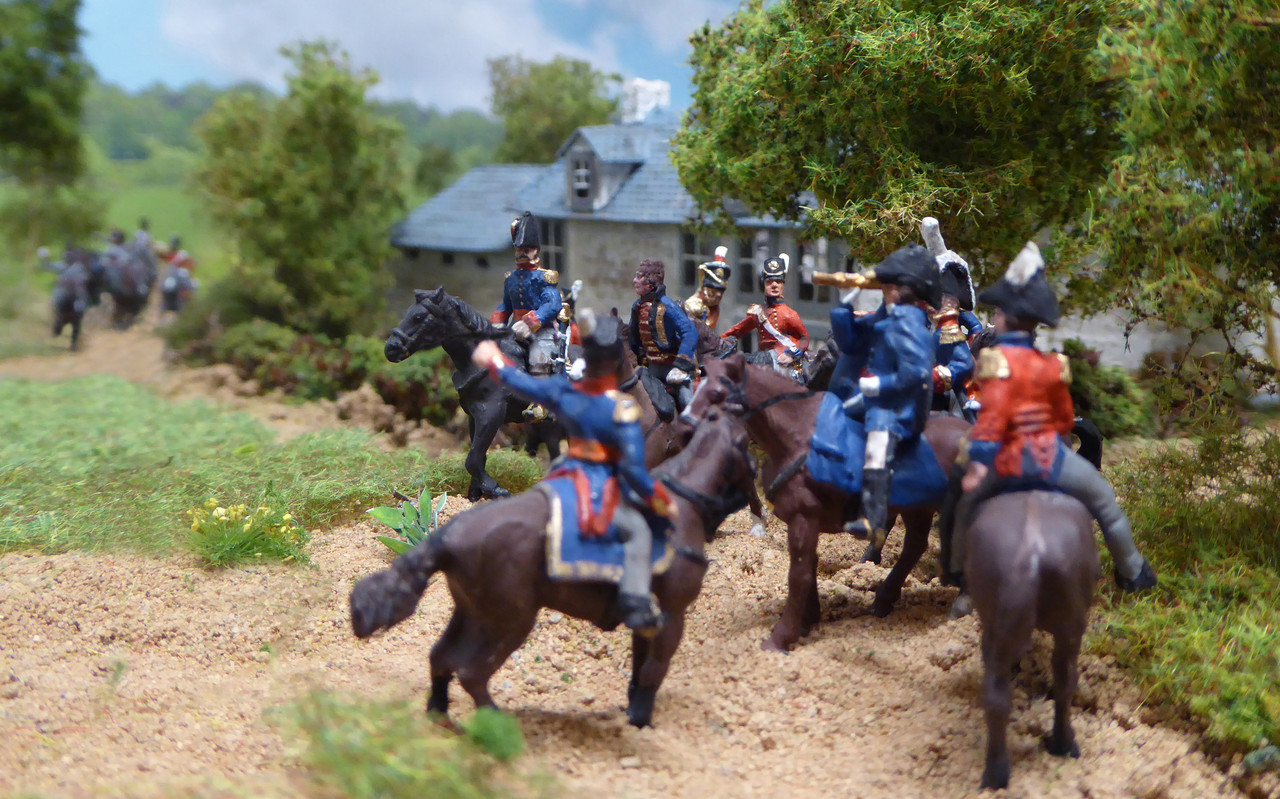
Dutch skirmishers from the 27th Jager Battalion engage with French voltigeurs in an attempt to keep the French off guard and exaggerate the Allied presence.
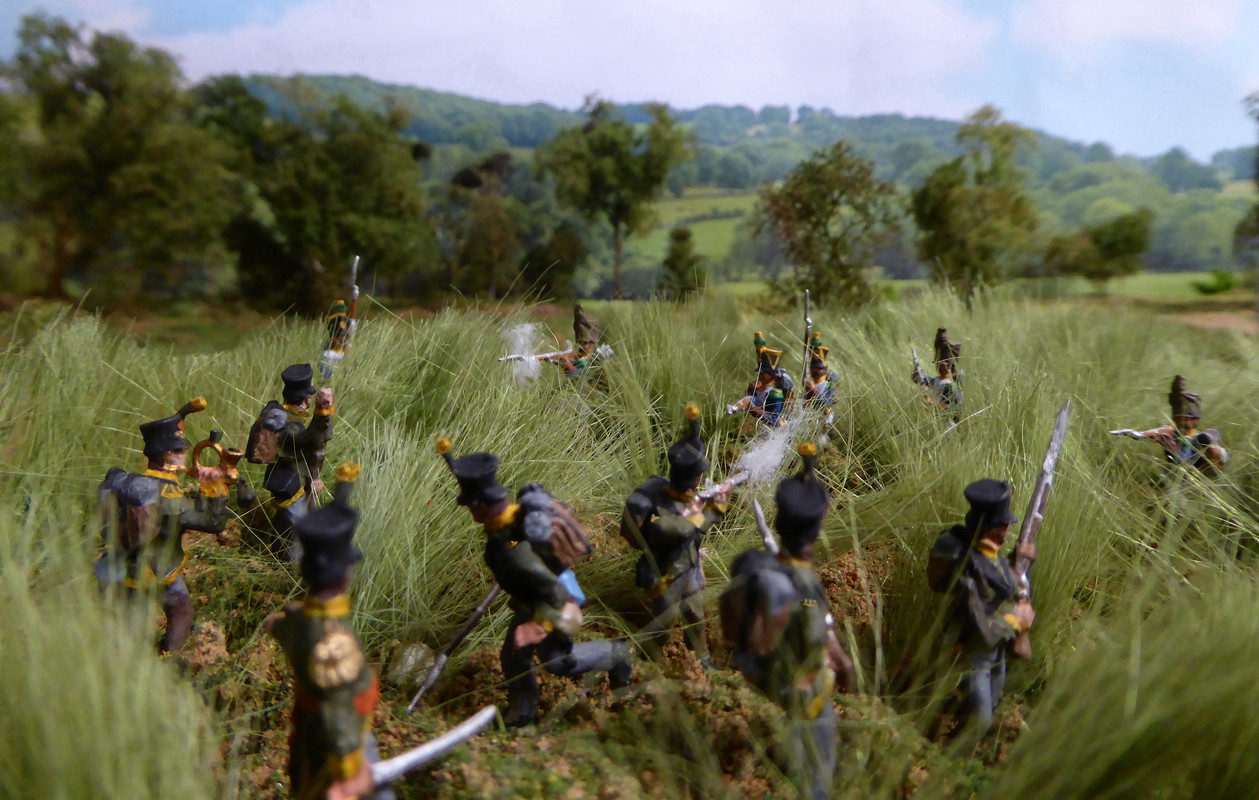
7th South Netherlands Line Battalion arrives from Nivelles and is directed into position.
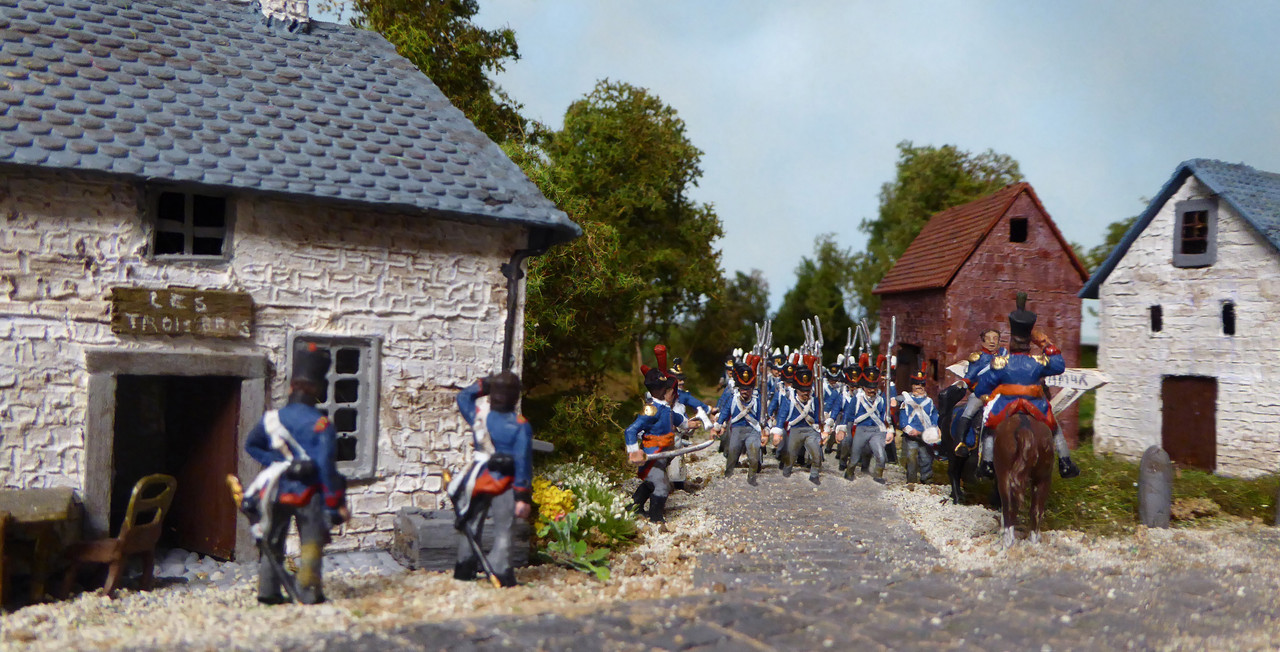
Marechal Michael Ney, Duc d'Elchingen, Prince de la Moskowa observes the Allied positions from the Bois de L'Hutte. Lieutenant-general Honore-Charles, Comte Reille commanding 2nd Corps is vary of being ambushed by the Allies. The undulating terrain and tall crops mean that the Allied dispositions are almost invisible to the French.
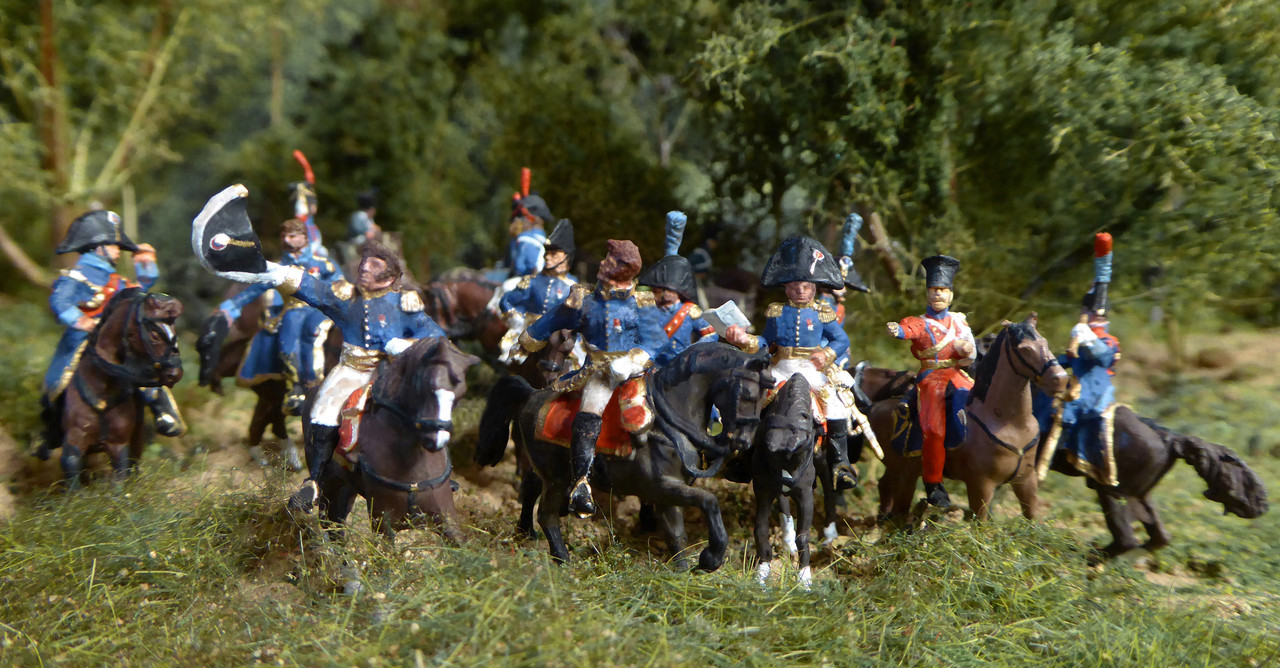
However, the Emperor's orders must be obeyed, Avant mes braves, a Bruxelles!








 Moderator
Moderator


